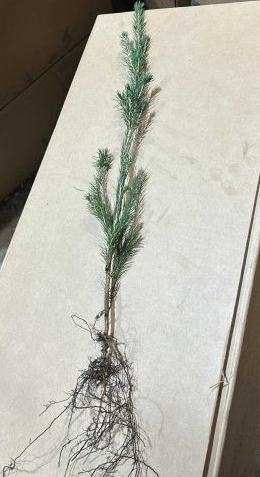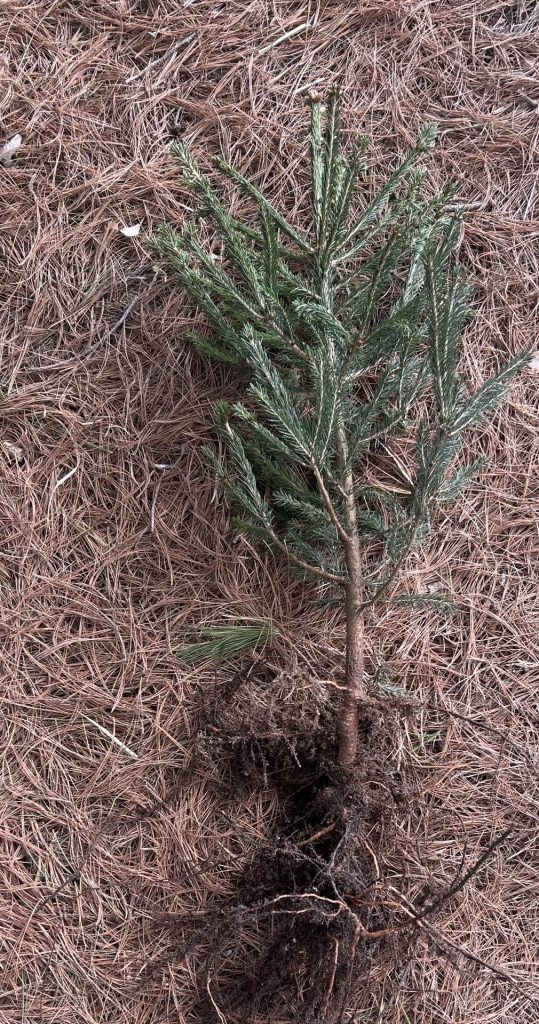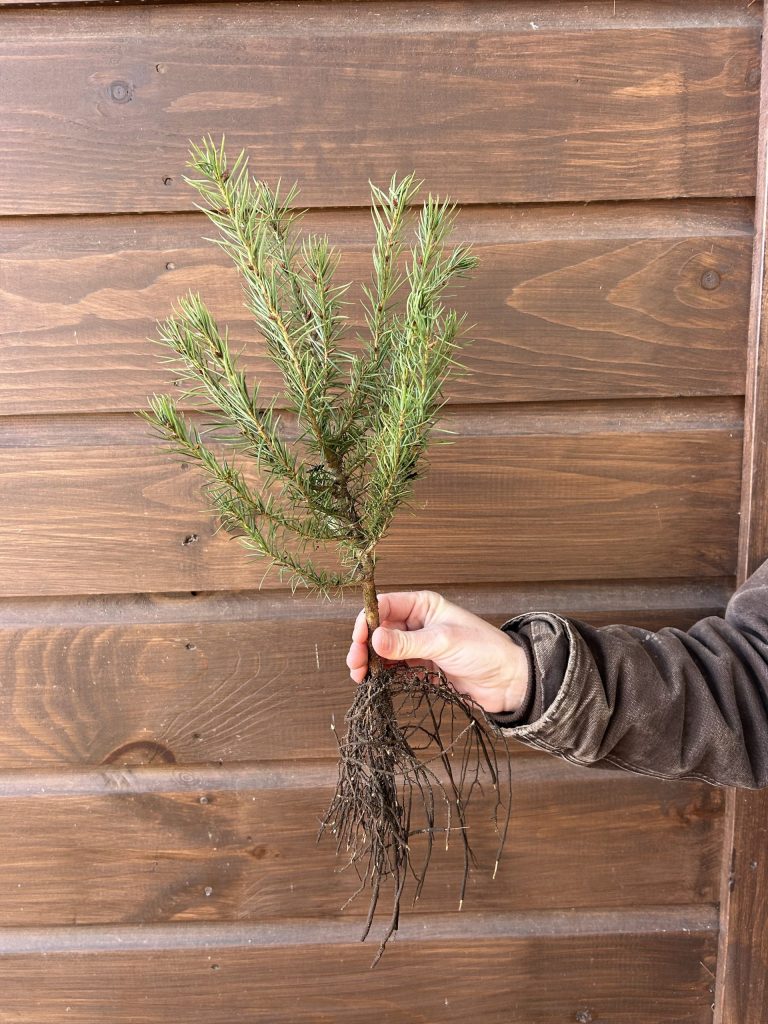When shopping for evergreen trees there is often an age listed next to the size of the tree. If you are not regularly purchasing young trees or in the tree industry, you might not have any idea what those numbers indicate. When I started working at the farm full-time twelve years ago, I had no idea how to interpret the age. Growing up here my dad, Pat, tried so diligently to teach me all about the trees he was cultivating. At that age I found it humorous to let the “boring” tree information go in one ear and right out the other ear. If I could have known that my future would be at the farm answering customer questions I would have listened!
Back to trees, the first digit in the number sequence is the number of years that the tree has been grown in a seedling bed. When they are in the seedling bed they are sown very close together and the goal for that bed is to get some height on the trees. The second digit in the sequence is the number of years in a transplant bed. Some trees are dug up and sold without ever being put into a transplant bed. Others have one, two or even three years of growing in a transplant bed. For example, when you see a tree listed as a “2-0” it has spent two years in the seedling bed and was not moved to a transplant bed. When a tree has time to grow in a transplant bed it will develop a larger root structure and branching. In the transplant bed they are given more space to grow. We often refer to any tree that has a zero for the second digit as a “seedling”. Trees with something other than a zero for the second digit are “transplants”.
One question that is often asked is “Which is the better tree to plant?”. All sizes will be equally healthy and with the proper care will do well. A transplant will have more energy stored in its larger root system and is often heftier, making it a better choice when being put into a Christmas tree field. Many of the seedlings are so small that they are easily lost in the grass if spraying or mowing is not kept up. The other factor is often a budget. Seedlings have less labor in production and are lighter for shipping, making them more economical.
Below are pictures of seedlings and transplants. Hopefully this is helpful, but if you have more questions or would like more guidance please call me! – Molly


